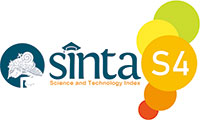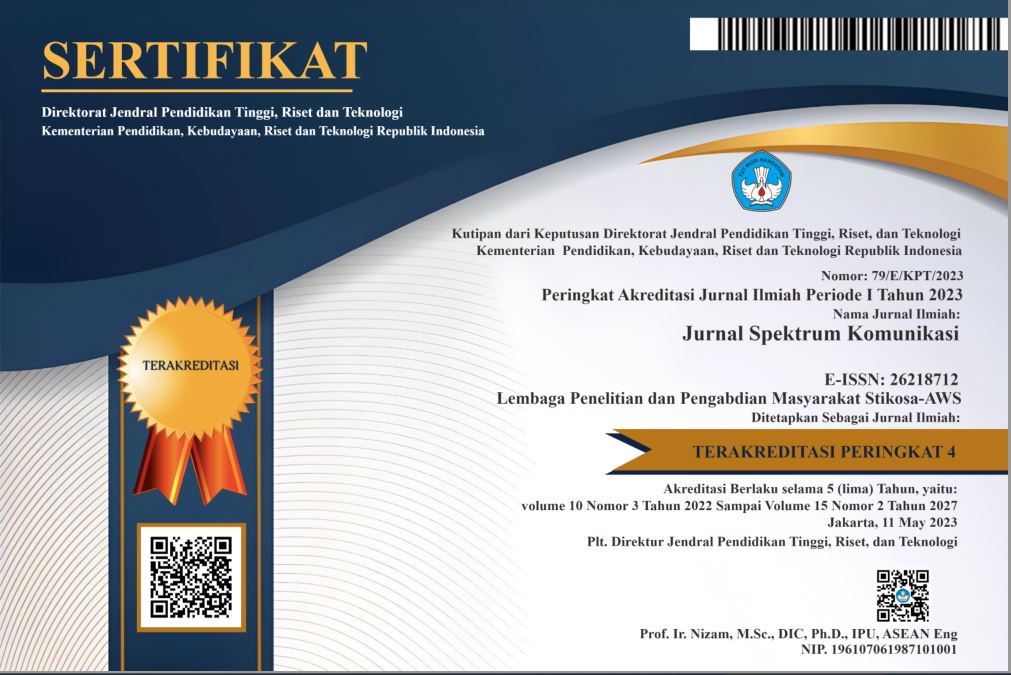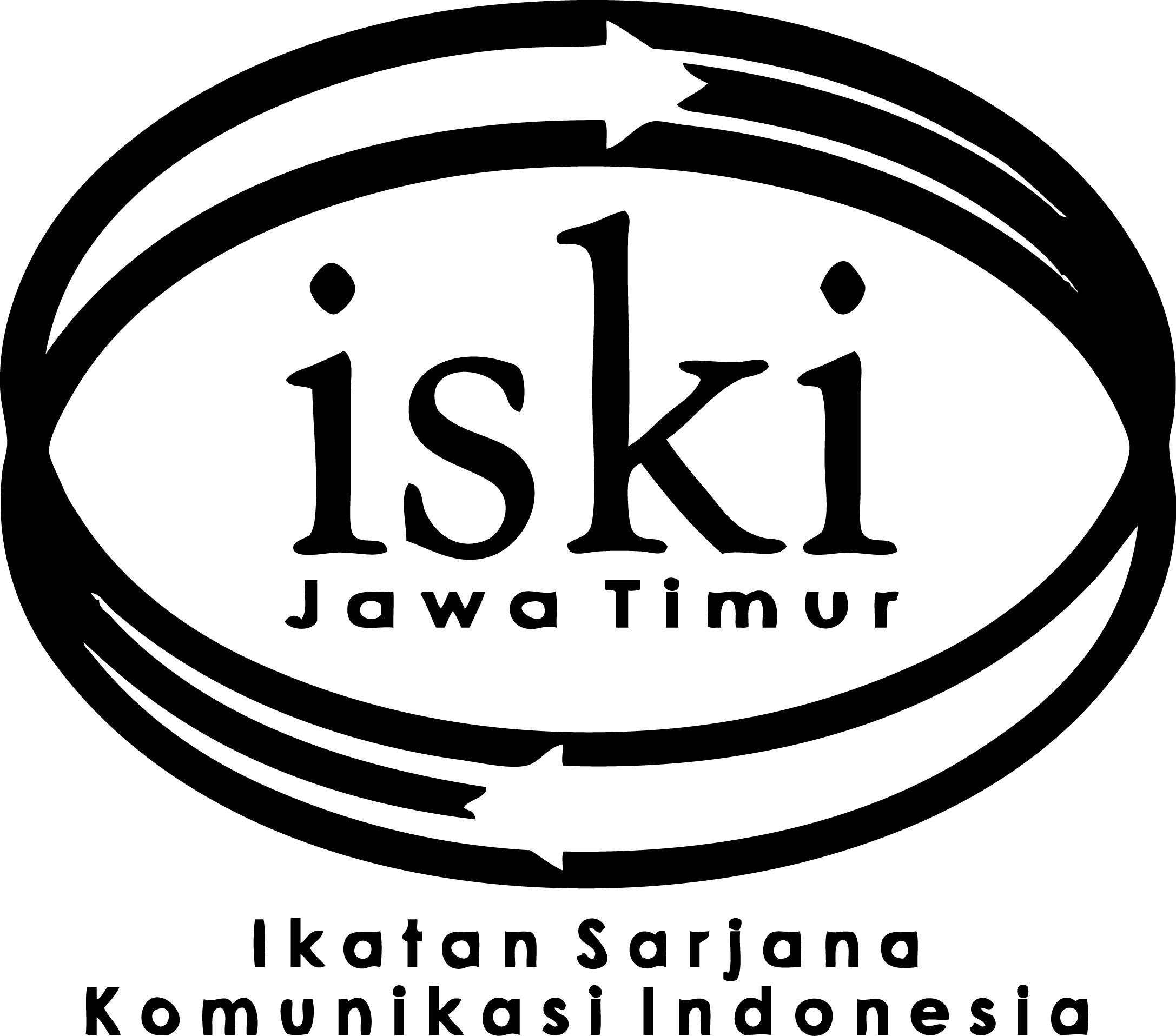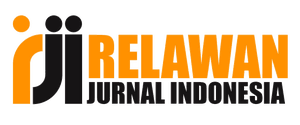Promoting the Hidden Paradise of Likupang through Digital Marketing
DOI:
https://doi.org/10.37826/spektrum.v12i1.685Keywords:
digital marketing , social media, tourism promotion, visit intention, LikupangAbstract
Likupang is located on the northern coast of North Sulawesi and has been designated as a super-priority tourist destination. It is surrounded by clear waters, white sandy beaches, green hills, and consists of several small islands. The development of the tourism sector in Likupang increases the region's revenue generated from tourist visits. However, the number of tourists visiting North Sulawesi decreased dramatically during the period of the Covid-19 outbreak, and slightly increased in the transition period, still far below the outbreak. The use of digital marketing communication can be maximized as an effective promotional tool to reach a wider audience. The purpose of this study is to describe the use of digital marketing communication to build destination image in order to attract tourists to visit Likupang. The method used is qualitative research with data collection techniques through observations, documentation study, and interviews with several informants including local government officials, the private sector, as well as tourists. The research results show that the use of digital marketing communication, especially through social media platforms such as Instagram and YouTube, plays a significant role in promoting Likupang. However, the official tourism department websites of the government provide very limited information about the tourism sector. In addition, visual content, particularly photo and video posts, can enhance the attractiveness of the destination and build destination image by featuring the beauty and uniqueness of the coastal scenery, islands, hills, and tourist activities, which become strong attractions for tourists visiting Likupang.
References
Rezania, D. (2021). A systematic review of organizational factors impacting cloud-based technology adoption using Technology-organization-environment framework. Internet of Things, 15, 100407. https://doi.org/10.1016/j.iot.2021.100407.
Alsoud, M., Alfdool, S., Trawnih, A., Helalat, A., & Mahrakani, N. (2023). Social media marketing activities and tourists’ purchase intention. International Journal of Data and Network Science, 7(2), 677-686.
Amalia, J., & Hanika, I. (2021). Tourism in Digital Era: The Influence of Digital Marketing on the Intention to Visit Museum. Malaysian Journal of Communication, 37(3), 274-287.
American Marketing Association. (2013). Definitions of marketing. 2013. URL: https://www.ama.org/the-definition-of-marketing
Arora, N., & Lata, S. (2020). YouTube channels influence on destination visit intentions: An empirical analysis on the base of information adoption model. Journal of Indian Business Research, 12(1), 23-42.https://doi.org/10.1108/JIBR-09-2019-0269
Badan Pusat Statistik. Perkembangan Pariwisata Sulawesi Utara. Badan Pusat Statistik (bps.go.id)
Bakti, I., Sumartias, S., Damayanti, T., & Nugraha, A. R. (2018). Pengembangan model komunikasi pariwisata berbasis kearifan lokal di kawasan Geopark Pangandaran. Jurnal Kajian Komunikasi, 6(2), 217.
Bala, M., & Verma, D. (2018). A critical review of digital marketing. M. Bala, D. Verma (2018). A Critical Review of Digital Marketing. International Journal of Management, IT & Engineering, 8(10), 321-339.
Buku Trend Pariwisata. Buku Tren Pariwisata 2022-2023 (kemenparekraf.go.id).
Canovi, M., & Pucciarelli, F. (2019). Social media marketing in wine tourism: Winery owners’ perceptions. Journal of Travel & Tourism Marketing, 36(6), 653–664. https://doi.org/10.1080/10548408.2019.1624241.
Chaffey, D., & Ellis-Chadwick, F. (2019). Digital marketing: Strategy, implementation & practice. Pearson UK.
Cristobal-Fransi, E., Daries-Ramon, N., Mariné-Roig, E., & Martin-Fuentes, E. (2017). Implementation of Web 2.0 in the snow tourism industry: Analysis of the online presence and e-commerce of ski resorts. Spanish Journal of Marketing-ESIC, 21(2), 117-130. https://doi.org/10.1016/j.sjme.2017.06.002.
Dataindonesia. Pengguna Media Sosial di Indonesia Sebanyak 167 Juta pada 2023. www.dataindonesia.co
Deb,S.K., Nafi,S.M. and Valeri,M. (2022), "Promoting tourism business through digital marketing in the new normal era: a sustainable approach", European Journal of Innovation Management, Vol. ahead-of-print No. ahead-of-print. https://doi.org/10.1108/EJIM-04-2022-0218.
Djafarova, E., & Rushworth, C. (2017). Exploring the credibility of online celebrities' Instagram profiles in influencing the purchase decisions of young female users. Computers in human behavior, 68, 1-7. https://doi.org/10.1016/j.chb.2016.11.009.
Febriyantoro, M. T. (2020). Exploring YouTube Marketing Communication: Brand awareness, brand image and purchase intention in the millennial generation. Cogent Business & Management, 7(1), 1787733. https://doi.org/10.1080/23311975.2020.1787733.
Gaffar, V., Tjahjono, B., Abdullah, T., & Sukmayadi, V. (2022). Like, tag and share: bolstering social media marketing to improve intention to visit a nature-based tourism destination. Tourism Review, 77(2), 451-470. https://doi.org/10.1108/TR-05-2020-0215.
Goic, M., Rojas, A., & Saavedra, I. (2021). The effectiveness of triggered email marketing in addressing browse abandonments. Journal of Interactive Marketing, 55(1), 118-145. https://doi.org/10.1016/j.intmar.2021.02.002.
Gretzel, U., Fuchs, M., Baggio, R., Hoepken, W., Law, R., Neidhardt, J., Pesonen, J., Zanker, M., & Xiang, Z. (2020). e-Tourism beyond COVID-19: A call for transformative research. Information Technology & Tourism, 22(2), 187–203.
Jiang, Y., & Wen, J. (2020). Effects of COVID-19 on hotel marketing and management: A perspective article. International Journal of Contemporary Hospitality Management, 32(8), 2563–2573. https://doi.org/10.1108/IJCHM-03-2020-0237.
Karjaluoto, H., & Leinonen, H. (2009). Advertisers' perceptions of search engine marketing. International Journal of Internet Marketing and Advertising, 5(1-2), 95-112. https://doi.org/10.1504/IJIMA.2009.021952.
Ketter, E., & Avraham, E. (2021). # StayHome today so we can# TravelTomorrow: tourism destinations’ digital marketing strategies during the Covid-19 pandemic. Journal of Travel & Tourism Marketing, 38(8), 819-832. https://doi.org/10.1080/10548408.2021.1921670.
Korgaonkar, P. K., & Smith, A. E. (2015). Shopping orientation, demographic and media preference correlates of electronic shopping. In Proceedings of the 1988 Academy of Marketing Science (AMS) Annual Conference (pp. 52-55). Springer International Publishing.
Kriyantono, R. (2014). Teknik praktis riset komunikasi. Jakarta: Prenada Media.
Moleong, L. J. (2010). Metode penelitian kulaitatif. Bandung: Remaja Rosdakarya
Morrison, A. M. (2018). Marketing and managing tourism destinations. Routledge.
Olson, E. M., Olson, K. M., Czaplewski, A. J., & Key, T. M. (2021). Business strategy and the management of digital marketing. Business horizons, 64(2), 285-293. https://doi.org/10.1016/j.bushor.2020.12.004.
Royle, J., & Laing, A. (2014). The digital marketing skills gap: Developing a digital marketer model for the communication industries. International Journal of Information Management, 34(2), 65–73. https://doi.org/10.1016/j.ijinfomgt.2013.11.008.
Syafrikurniasari, N., & Widiani, S. P. (2020). Pengaruh Pesan Kampanye No Straw Movement Di Media Sosial Terhadap Perubahan Sikap Publik. LUGAS Jurnal Komunikasi, 4(1), 17-26.
Silbert Jose, S. V. (2021). Impact of COVID-19 pandemic on content marketing strategies: Transforming higher education, work and life. Turkish Journal of Computer and Mathematics Education (TURCOMAT), 12(13), 2417-2427. https://doi.org/10.17762/turcomat.v12i13.8933.
Todor, R. D. (2016). Blending traditional and digital marketing. Bulletin of the Transilvania University of Brasov. Series V: Economic Sciences, 51-56.
Varadarajan, R., Welden, R. B., Arunachalam, S., Haenlein, M., & Gupta, S. (2022). Digital product innovations for the greater good and digital marketing innovations in communications and channels: Evolution, emerging issues, and future research directions. International Journal of Research in Marketing, 39(2), 482-501. https://doi.org/10.1016/j.ijresmar.2021.09.002.
Wiencierz, C., Poppel, K., & Rottger, U. (2015). Where Does My Money Go? How Online Comments on a Donation Campaign Influence the Perceived Trustworthiness of a Nonprofit Organization. International Journal of Strategic Communication, 9(2), 102–117. https://doi.org/10.1080/1553118X.2015.1008634.
Yu, M., Li, Z., Yu, Z., He, J., & Zhou, J. (2021). Communication related health crisis on social media: a case of COVID-19 outbreak. Current issues in tourism, 24(19), 2699-2705. https://doi.org/10.1080/13683500.2020.1752632.
Downloads
Published
How to Cite
Issue
Section
License
Copyright (c) 2024 Jurnal Spektrum Komunikasi

This work is licensed under a Creative Commons Attribution-ShareAlike 4.0 International License.
























